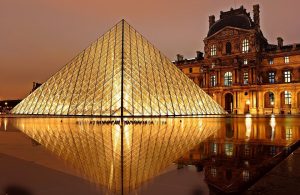Because each group of ancient peoples had resources that were limited to the local area, their experiences in the world were uniquely theirs. This uniqueness is depicted in the types of art these cultures produced. Areas where stone could be carved chose that as the basis for much of their art. Ancient man, living in arid deserts such as the Sahara, did not have loose stone. Their art was carved into the rocks of the desert, sometimes colored with locally available pigments, and left for the future to discover.
Those who lived along the Nile River in Egypt had this form of art, but learned to use other mediums than stone carving. The ancient Egyptians used stone, wood, ivory and metal to create sculptures. Some of these pieces were colored and others relied on the color of the piece being carved. Their art depicted life at the time of the art creation. This was the normal form of art for this culture in ancient times.
Modern man has better opportunities for travel and use of non-local materials. Use of the internet to share information, concepts and ideas has changed the face of art. No longer must art be cultural or stay within the original culture of the artist. Art from multiple mediums and cultures can now be fused into new forms and styles. Modern culture itself is a fusion of many past and present cultures. The lines are being blurred and art follows these cultural adaptations in its representation of modern man and his world.

















